By Carolyn Bick
NORTHWEST ASIAN WEEKLY
It’s only been six months since Tuyen Than took the helm of the Chinatown-International District Business Improvement Association (CIDBIA), but in that short time, she’s initiated changes that are already proving a boon to the neighborhood.
The Little Saigon-based Drag and Drop Creative co-founder became the CIDBIA’s executive director in May. Than said a friend initially encouraged her to apply for the post, so she decided to throw her proverbial hat into the ring. Following two rigorous interviews—the second of which involved speaking with 15 people—she landed the job.
CID safety improvements
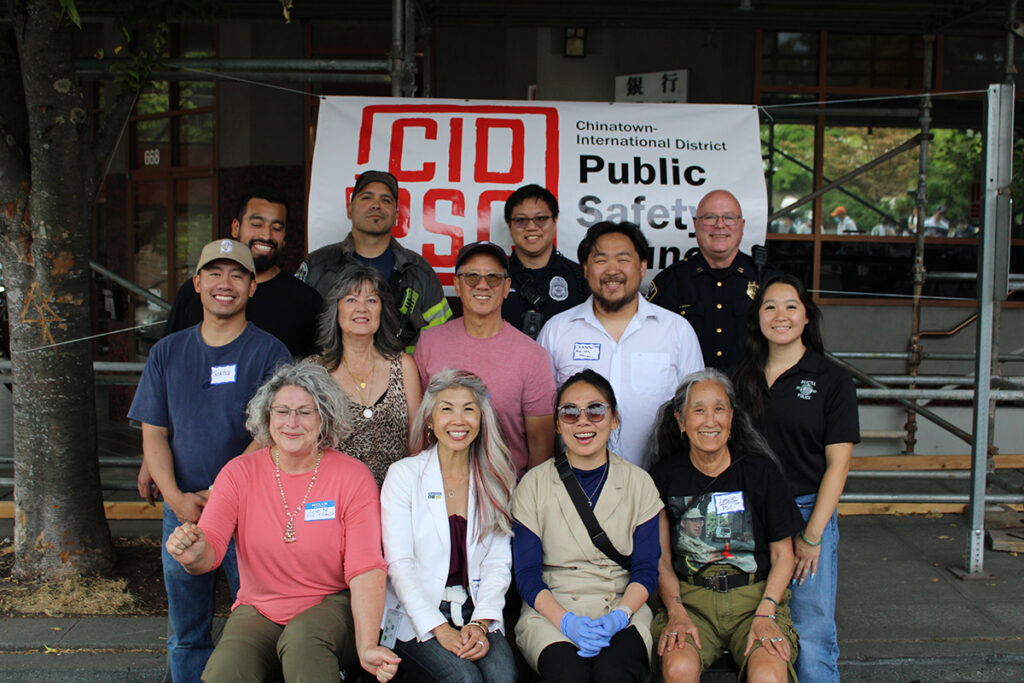
Courtesy: CIDBIA
Than hit the ground running. In the second month of her tenure, the CIDBIA launched the Safety Ambassadors program, a neighborhood response team that could respond to calls for help from different business owners in the Chinatown-International District (CID).
“With the Safety Ambassadors, we’re building a streamlined operation so that businesses, when they call for help, somebody shows up,” Than said. She explained that there are three people on the ground every day in the neighborhood from 2 p.m.–10 p.m., and that the team has already handled more than 300 calls for service.
The Safety Ambassadors have a five-minute response time, she said, compared with the Seattle Police Department (SPD), whose officers can take hours to respond to a call for help. Than said this is because SPD is understaffed, and therefore don’t respond to lower priority calls.
“We’ve just heard so many positive things from businesses,” Than said. “Having the Safety Ambassadors there and responsive has given the businesses a lot more confidence that they don’t have to act as their own security guard.”
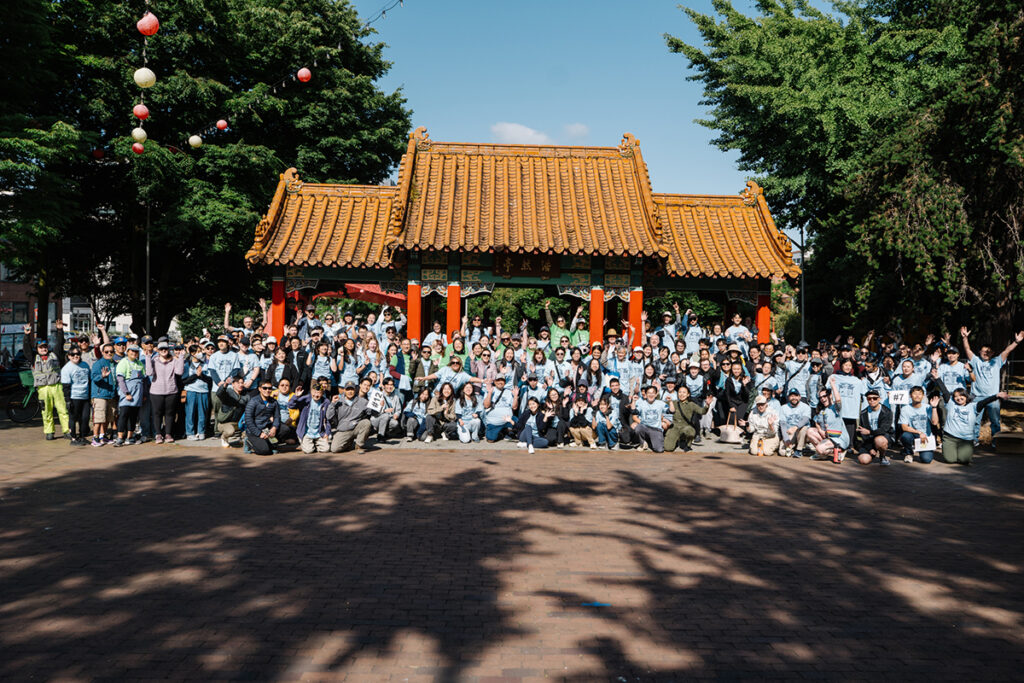
CIDBIA Spring Clean volunteers (Courtesy: CIDBIA)
The CIDBIA has also created a small team to address graffiti and street rubbish, as a supplement to City services, Than said. Every day, contractors are out on the streets of the CID picking up trash, scrubbing away graffiti, and pressure washing buildings.

Courtesy: CIDBIA
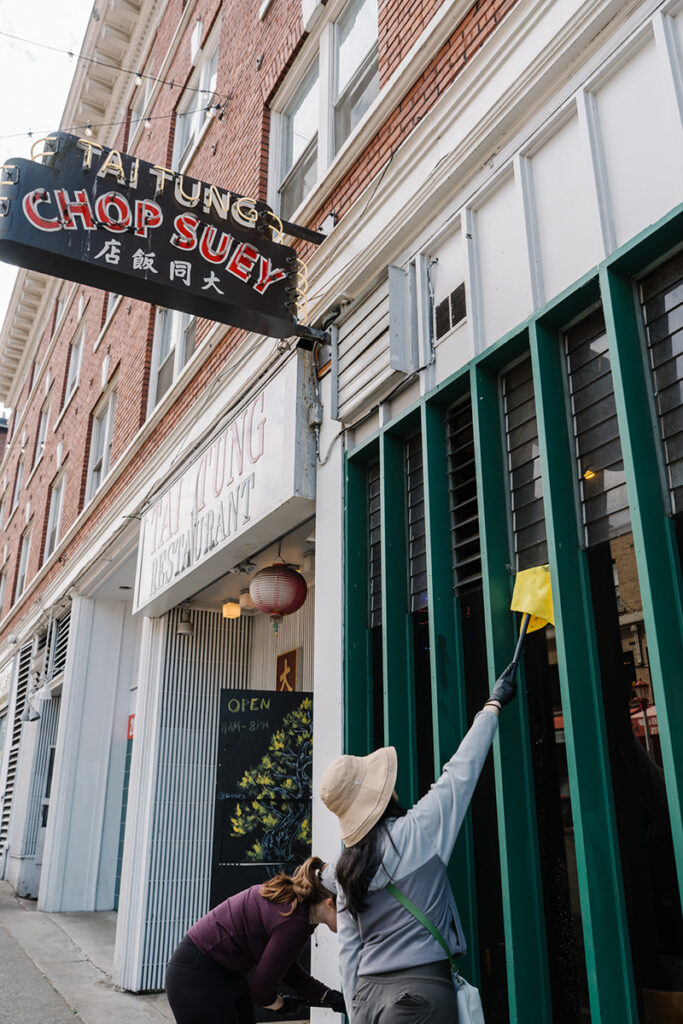
CIDBIA Spring Clean on June 14, 2025 (Courtesy: CIDBIA)
The association has also helped CID business owners access the City’s Back to Business Fund, which the City launched in July. The Back to Business Fund contains the Storefront Security Fund and the Storefront Repair Fund.
“We were able to give some assistance to businesses who’d had their windows broken, or wanted to upgrade their gate,” Than said. “We were able to help about 20 businesses with the application process, finding a police report, filing it, and helping track their reimbursement. So that’s been really great to make our neighborhood feel very cared for and vibrant, and have businesses feel safe to operate.”
World Cup games
She also said that the CIDBIA is practicing early for the upcoming FIFA World Cup games next year, and testing out different area activation ideas through a new program called Club World Cup. With 750,000 people slated to pour into Seattle’s streets—particularly in and around the CID, located just a few minutes from the Lumen Field tournament grounds—the association doesn’t want a repeat of last year’s All-Star Game, where baseball fans flooded the CID, but didn’t visit the neighborhood or the businesses there and took up available parking for potential customers.
Than and the CIDBIA team developed the idea of a two-week scavenger hunt, executing it with the help of a grant from Sound Transit to activate Union Station. The team tested it out this past summer.
“With the Club World Cup scavenger hunt activation, we saw about 1,000 people using the check-in QR code website, which was really cool because we didn’t have any posters made [for Club World Cup],” Than said. “We didn’t have a lot of time to do a ton of promotions because we just had to launch it so quickly. … That was a creative way where we could test out an idea—what is the psychology of people who are going to these games? And how do we position the CID as a destination or even a pre-[or] post-game location for folks? And so that was really exciting.”
The CID will be at the epicenter of World Cup Games activity. Than said that the association particularly wants to ensure that at least some of the projected $9 million in tourism dollars flows into the CID.
To that end, the association has also been asking the City to provide more public bathrooms, increased sanitation measures, and parking solutions. That would help businesses streamline their operations and avoid a repeat of the 2024 All-Star Games, and help incoming fans to see that the CID is a place in which to spend time, not simply pass through.
“There’s so much alignment. It’s a global event … I recognize that this is going to be a once-in-a-lifetime event that comes here,” Than said. “I want to make sure that we’re prepared. We’re working on updating our CID tourism brochure. We’re reaching out to hotels to see if we can place those brochures there and make sure that we have the correct wayfinding.”
Night Market
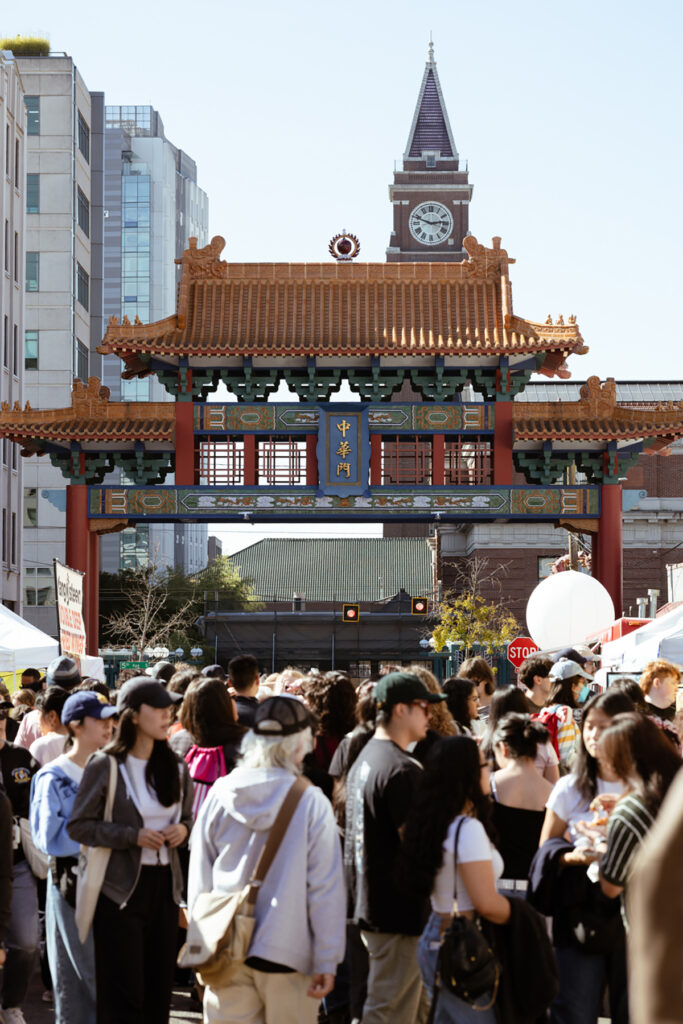
Courtesy: CIDBIA
With just a couple hiatuses—one in 2020, due to the onset of the COVID pandemic and another in 2023, due to financial strain—the CIDBIA has run the city’s oldest night market, the CID Night Market, since 2006. Than said that this year, in an attempt to accurately gauge CID foot traffic, the association also worked with the City to put a geofence around the market. The geofence allowed the association to gather attendance data.
The CIDBIA had been guesstimating that about 20,000 people showed up to the night market.
But that estimate wasn’t even close.
“Through this website, we were able to find out that, at this past night market, we had about 67,000 people,” Than said. “It was way more than we were expecting. On average, the traffic for the CID is about 20,000–25,000 every day. But this way, with this new data, we can track year after year—is it getting bigger? Are we attracting newer people?”
Than said that they are already planning ahead for the market’s 20th anniversary in a couple years, and will extend the hours so that the “farewell to summer” event is a “true night market.”
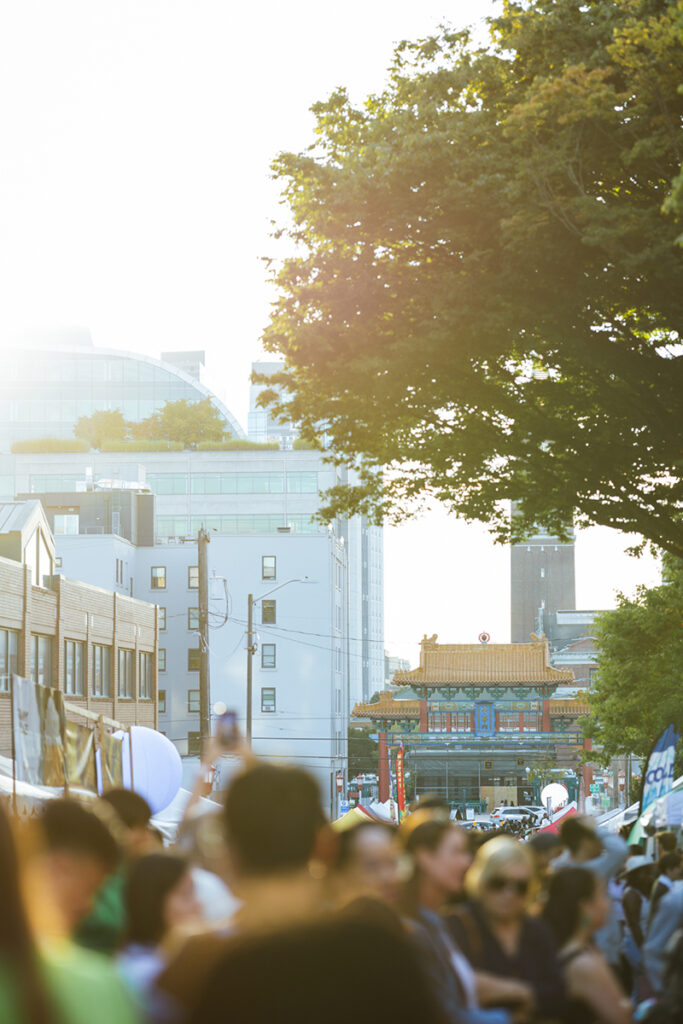
Courtesy: CIDBIA
Unexpected challenges
Like every venture, running the CIDBIA has its challenges. Than said that she has faced two major obstacles: visibility and language barriers.
Originally, she said, the association was “kind of tucked away” at Hing Hay Coworks, and that the CIDBIA learned during a 2024 listen-and-learn tour that few businesses knew who the organization was or that they could access them as a resource.
So, in October, Than decided to move the association into its own storefront on Jackson Street to allow for a more visible presence in the CID.
“Because the World Cup is on the horizon, and because we want to be a continued resource to businesses, I was looking for a place that was accessible, so that we could have open office hours, if businesses just want to walk in,” Than said. “We want people to know that we’re here for them. We’re open for business as a BIA.”
Than also does not speak any Chinese dialect. While she wants to ensure everyone’s voice is heard, the association doesn’t have the funding or the staff to cover the tapestry of languages spoken in the CID.
“We have a lot of ratepayers. Most of them can speak English, but I want to make sure that the people [for whom] English isn’t their first language, they’re able to access resources,” Than said. “That’s something that I’m continually working on. Right now, we do have someone on staff that can speak Cantonese. But I recognize that that is a gap.”
She also learned through a little trial-and-error that multilingual flyers could be helpful. For instance, she said, when they first launched the Safety Ambassadors program, one shopkeeper thought the ambassadors who visited to introduce themselves were solicitors.
“So that was when I was like, “Okay, we really, really need to make sure that we have multilingual flyers. Uniforms also have to have everything translated into Chinese, Vietnamese, so that they know that the safety ambassadors are available,” Than said. “That’s something that I’m working on identifying: where the gaps are, what we can work on. It’s a long process, because there’s so much content that we need to translate.”
Fortunately, Than said, the CIDBIA can “really lean on our partnerships” with fellow community organizations Friends of Little Sài Gòn (FLS), the Seattle Chinatown International District Preservation and Development Authority (SCIDpda), and the Chinese Information and Service Center (CISC).
“They’ve been really great about partnering with us in facilitating these interactions, but that also means that we’re entirely dependent on their availability—and for any nonprofit right now, everyone’s overworked, underpaid, underappreciated,” Than said. “We’re trying to find multiple layers of backup. … We also have an app that connects to a live translator, in the event that we have an interaction with someone, and we don’t have our partner there with us, that we use in an emergency.”
The language barriers also mean that, to put it simply, Than doesn’t know what she doesn’t know. If people whose first language is not English can’t communicate with the association, the team doesn’t know what further need exists in the community, because those individuals will not come in to talk with them.
The next six months
While most of the next six months will be focused on preparing for the World Cup Games, Than also said that the association will be working to reintroduce themselves to the CID business community, as a sort of parallel endeavor that will help everyone during the massive international event.
While the association doesn’t have unlimited funding, Than wants to make sure that business owners know that the CIDBIA is a resource for them, if they need any kind of assistance. To that end, she said, they are actively seeking and working with different partners from various institutions, including Seattle University and University of Washington graduate students. These students could help provide “hands-on team support for these businesses in preparation for the World Cup—but also World Cup and beyond.”
She also said that the organization is tightening up its communications strategy to ensure it is strong and streamlined. For instance, the CIDBIA has a website and newsletter, but they want to know whether recipients are actually reading those emails.
“If people aren’t reading their emails, how are they getting the information?” Than explained. “Is it going to be primarily a face-to-face [endeavor]? Is it a community board? Is it text messaging? We want to make sure that, in the event of an emergency, we’re able to get information out to people as quickly as possible. Building that stronger operation is going to be really important.”
Of course, Than said, the CIDBIA didn’t do all this heavy lifting in such a short time on its own. She said that they couldn’t have done it without their many local partners, including FLS, SCIDpda, CISC, the Asian American Foundation, and the City’s Office of Economic Development, Department of Neighborhoods, and the Mayor’s Office.
“What I see, time and time again, is that it doesn’t take just one organization or one group or one person,” Than said. “It takes all of us. We all have to do it together. And we all have to work together as a team. I’m really excited because the CID—we are a team.”



